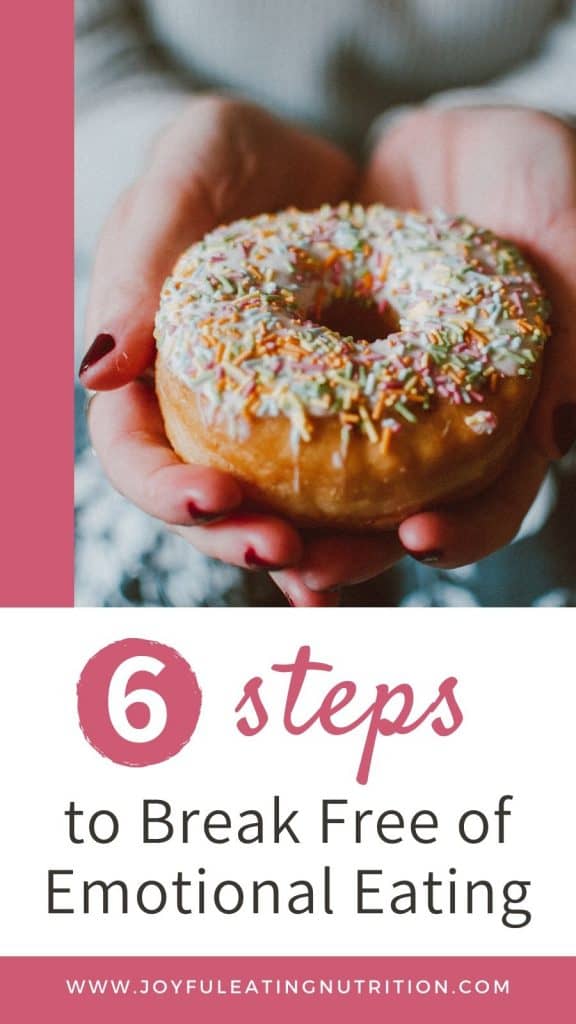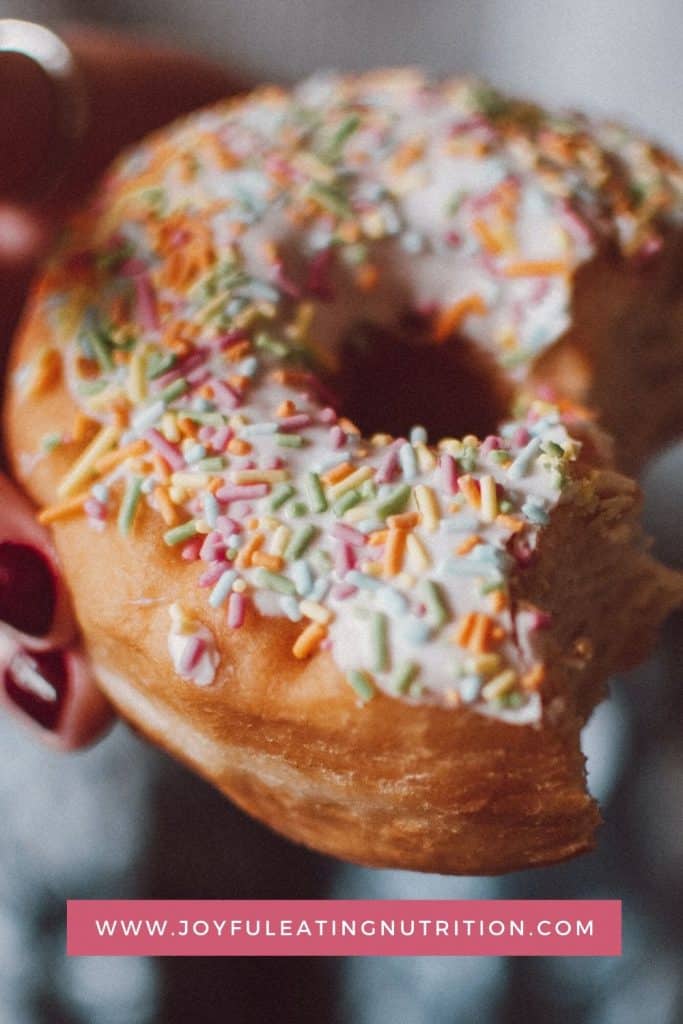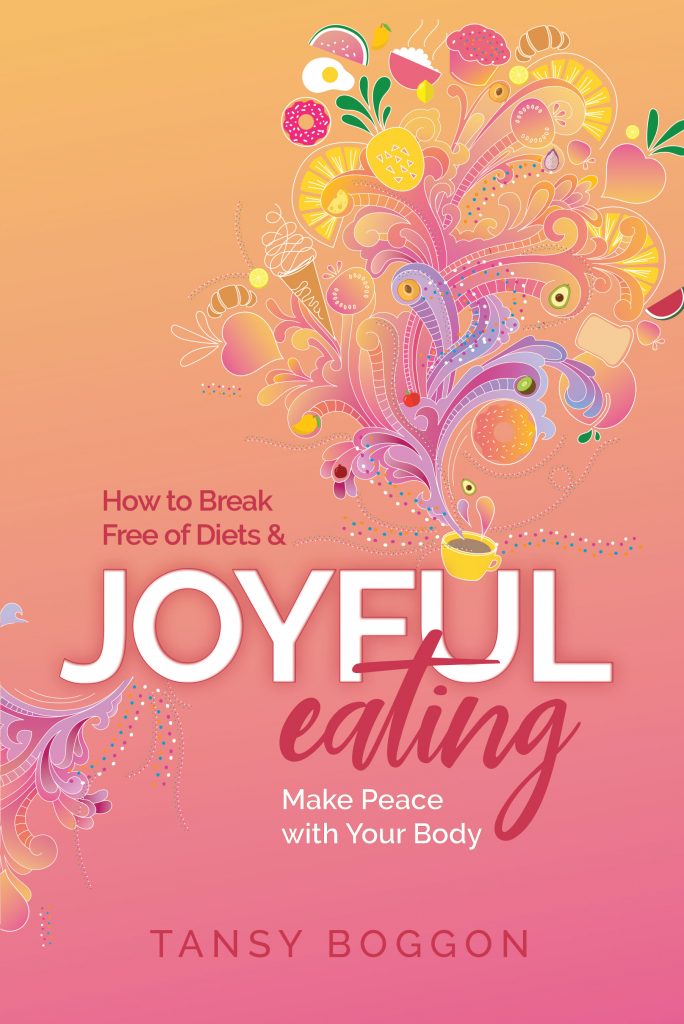How do we stop the cycle of emotional eating when it feels out of control?
What is emotional eating?
Emotional eating is when the primary reason for eating is mood rather than physical hunger.
Why do we eat emotionally?
I pondered this question one day while riding the bus while living in Singapore.
Diagonally across from me was a boy of about eight, sitting with his mother. The boy was grumpy and whiny, with tears in his eyes.
Although I was unaware of what the problem was, I could see that he was tired and fed up.
The mother momentarily attempted to console him with words but then reached into her bag and presented him with an individual serving of biscuits in a small packet. The boy considered the offering and, with what appeared to be defeat, began to eat the biscuits quietly.
As I sat there, I thought: how is this child learning to deal with his emotions?
Obviously, I only witnessed one moment in this child’s life. Yet, comforting or soothing our emotions with food is common. It’s almost as if food has become a similar reflex to putting a pacifier in a crying baby’s mouth.
Is it any wonder that, as adults, we use food to distract and numb ourselves from our emotions? That many of us eat rather than process or express our emotions? Or eat because we are unsure of how to deal with our current situation?
I know I have!
Emotional eating is a learned behaviour
It is not only our experiences with food and emotions but the beliefs and traditions of our society that cause us to eat for emotional reasons.
We eat to celebrate. Food plays a role when we are proud, happy, sad, bored or lonely. We eat as a way to comfort and preoccupy ourselves. And we eat as a way to ignore or numb our feelings.
And none of this is a personal failing—it is learnt behaviour.
We’re not at fault because we eat for emotional reasons. Everyone does it to a varied extent.
It is completely normal, on occasion, to use food as a comfort, a reward, or even a form of procrastination or distraction.
Is emotional eating a concern?
Many of us may feel immense guilt and shame due to our emotional eating as we either believe we ate too much or ate foods that we shouldn’t. This thinking is the consequence of diet mentality.
Diet mentality comes with rules of what we should or should not eat. It can cause us to compensate for our emotional eating by undereating and overexercising.
However, this does more to trap us in a binge-restrict or diet cycle, where our emotions fuel our eating, and our eating fuels our emotions. This is why ditching diet mentality is essential to breaking free of emotional eating.
Ditch diet mentality to free yourself of emotional eating.
Joyful Eating: How to Break Free of Diets and Make Peace with Your Body
“… practical tools to help people release their sabotaging thoughts, enabling them to eat more intuitively and find joy in the moment.”
— Michelle Stanton, author of The Timeless World.
When emotional eating becomes a concern
Although it is normal to eat for emotional reasons from time to time, it may be a concern when:
- it becomes our most predominant form of eating or our primary means to soothe our emotions
- we repeatedly under- or overeat, causing our hunger to swing between the extremes of starving and overly stuffed
- we frequently eat to comfort or numb ourselves from our emotions or to inflict pain on ourselves as a punishment for thoughts or emotions we are feeling
- we overeat because no amount of food seems sufficient to fill the emotional void
Despite the above emotional eating behaviours being of concern, emotional eating is not the worst thing we could do.
Food is a significantly less harmful substance to cope with emotional distress than most other addictive substances or behaviours. Not that food is addictive, which I explain here: Food addiction: fact or fallacy?
My point here is if food helps us through stressful times or emotions we’re not ready to face, it may be the best thing for us in the short term.
There are, however, gentle steps we can take to reduce the frequency and intensity of our emotional eating. The steps I describe below are not so much to completely stop emotional eating but to dissipate the power emotional eating holds over us so that we feel less out of control with our emotional eating.
The intention is not for emotional eating to cease entirely but for the out-of-control feeling to dissipate and for us to feel at peace with food more often than not.
6 Steps to Break Free of Emotional Eating

Step 1: Stop seeing emotional eating as a problem
Counterintuitively, the way to stop emotional eating is to no longer see it as a problem.
As I previously mentioned, emotional eating may now, or in the past, serve a purpose. It may provide, or have provided, protection from overwhelming emotions we couldn’t face.
Further, it is our thinking that our eating should be other than it is that makes emotional eating a problem. Although we may be concerned about our eating, seeing it as a problem or something to be fought against can reinforce and amplify it.
Declarations that we’ll never do it again can cause us to restrict and control our eating behaviour, which inevitably leads us to give in and eat (as is the case with dieting). Consequently, we can think that we are the problem and that something is wrong with us.
However, if we emotionally eat, we are not broken. It is not a personal failing. Emotional eating has served a purpose, and our attempts to control our eating may be the very thing that leads us to feel out of control with food.
Step 2: Bring awareness to eating
Often, we eat emotionally in a mindless state, barely noticing that we’re eating. That is, until we look down and see an empty package or plate before us!
In this step, we are simply noticing that we are emotionally eating without judgement or trying to stop or change it. We notice that we are emotionally eating. And notice what we choose to eat in these moments and how the food and experience make us feel.
As we draw our awareness to our emotional eating, it is important we do so without reprimanding, blaming or shaming ourselves.
Step 3: Cease feeling guilt or shame for emotional eating
Guilt and shame do more to keep us trapped in the restrict-binge cycle than break free of emotional eating. Blaming or shaming ourselves will not change what has occurred and does more to perpetuate further emotional eating. When we release the guilt and shame fueled by diet mentality, we can then explore the triggers for our emotional eating in a calm and impartial way.
Step 4: Identify the emotions that trigger emotional eating
With non-judgemental awareness, we can begin to explore the triggers for emotional eating; that is, identify the emotions behind our emotional eating.
So, for example, rather than telling ourselves that we shouldn’t have eaten all the ice cream, which leads to guilt and shame, we can be curious about why we kept eating ice cream even when we were overly full.
In such a situation, we may reflect on the eating experience and think, ‘Isn’t it interesting how I kept eating and eating like nothing could satisfy after talking to mum on the phone?’ ‘Why did I eat to the point of discomfort?’ ‘What did I truly want? Was it to vent, relax, connect and feel good enough?’
Step 5: Explore ways to release and soothe emotions without food
Then, with an awareness of our emotional wounds or triggers for eating, we can consider other ways to deal with our emotions without using food, if and when appropriate.
It may be that we require strategies to deal with certain situations or to set boundaries.
We may find that it helps to find other ways to nourish and soothe, such as taking a bath, having a massage or engaging in a flow activity that absorbs our full attention.
It may be useful to engage in practices to relax and bring our awareness to the reality of the moment rather than the thoughts in our minds. We may find it helpful to practice meditation or body scans. I have created a guided body scan meditation for this purpose.
However, at times, we may still want food to soothe and comfort us, which is perfectly okay. Yet we can do so with an awareness that we are eating for emotional reasons without subsequent guilt and shame.
Step 6. Uncover the thoughts and beliefs behind the emotions
Without the emotional charge in response to our emotional eating, we’re more likely to be in a better state of mind to explore the thoughts and beliefs that fuel our emotions.
Our thoughts and beliefs about the situations that occur in our lives can intensify the emotional distress we experience. We can dissipate the emotional charge by exploring and investigating our thoughts and beliefs for truth.
I don’t want to trivialise this. Feelings of emotional distress may require significant inner work. In the book Joyful Eating, I cover some basics of working through the thoughts and beliefs that fuel emotional distress, particularly concerning our relationship with food and our body. You may find that this is a helpful place to start.
However, as I suggest in the book, you may need to see a therapist or counsellor who specialises in emotional issues to work through your emotions and the underlying experiences, situations and thoughts.
Freeing yourself from out-of-control emotional eating
I believe that by taking these steps, we can reduce our emotional eating.
It is not a quick fix. We cannot transform our relationship with food instantly.
If you remember my story on the bus in Singapore, emotional eating has been reinforced our entire lives. Thus, freedom from out-of-control emotional eating is an ongoing process. It is a process where more emotions and situations arise for us to explore our reasons for emotional eating. Hence, we need to be easy on ourselves and explore our eating behaviours in a gentle and compassionate way.
Much love,
Tansy xxx
Are you ready to break free of emotional eating?
If you’d like to explore how diet mentality impacts your relationship with food and uncover your emotional triggers and reasons for eating, grab yourself a copy of my book Joyful Eating. In this book, I provide self-reflection activities to help you explore your beliefs and emotions that erode trust in your body and yourself around food to help you form a more joyful relationship with food and your body. If you’re not ready to purchase the book, you can download the chapter, Debunk the Diet Myth, for free.



